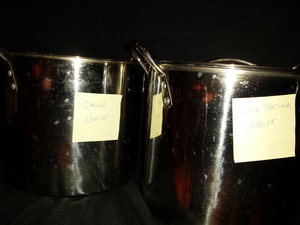It’s a question that employees unfortunately ask their MN certified food manager all too often. “Does this smell OK to you?” Before you have to deal with the conundrum of trying to figure out how old a side of fish, a pre-made soup or other refrigerated item is by playing the “does this smell good?” game, you should take a moment to review proper labeling procedures.
Keeping Food Safe through Proper Labeling
There are three important things that should be included on every item in your storage areas.
The first two items on our list are easy to determine and label, but there is no absolute when it comes to an expiration date. Many prepared foods that contain dairy and proteins have a shorter shelf life than other foods. It is important to be aware that some proteins do not necessarily begin to smell as they age. That is why we suggest that you determine how long that you can store these items before discarding them.
Labeling is just the first step to ensure food safety. We have two other suggestions that will help prevent spoiled food from being served to your guests. First, never mix two batches of sauces, soups or other liquids that have been made on different dates. An older batch can contaminate a newer batch and create a hazard even though the label shows a recent creation date.
Secondly, rotation is important. It has become an industry cliché, but FIFO, first in first out, should be enforced in every kitchen and preparation facility. Using the oldest dated product first will ensure that it doesn’t begin to spoil and begin growing dangerous bacteria.
Following these easy steps can help keep your guests safe from food-borne illness and save your nose from having to smell another potentially rancid side of salmon or pungent sauce.



